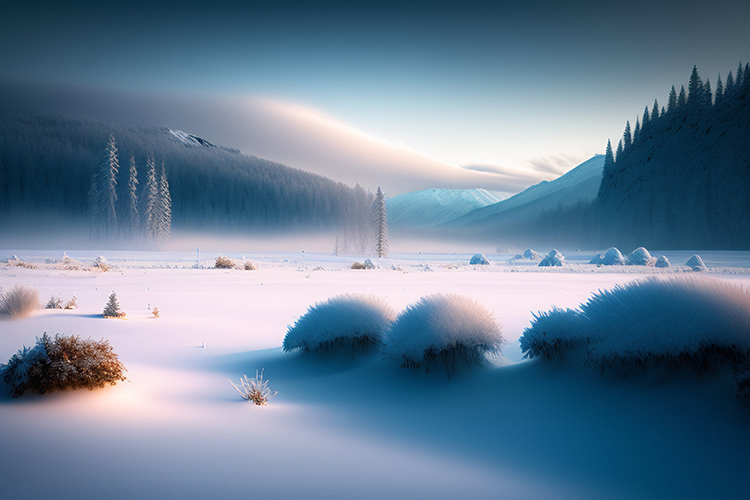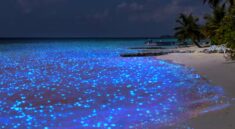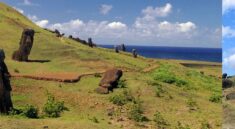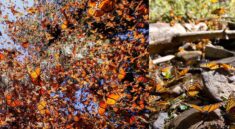Lapland is a vast region that spans across several countries in northern Europe, including Norway, Sweden, Finland, and Russia. It is known for its stunning natural beauty, including vast forests, frozen lakes, and the magical Northern Lights. Lapland is home to the indigenous Sami people, who have a unique culture and history that dates back thousands of years. The Sami are known for their traditional reindeer herding, handicrafts, and their distinct language and music.

Lapland is a popular destination for winter sports enthusiasts. The region offers a wide range of activities, including skiing, snowboarding, snowmobiling, and dog sledding. Some of the top ski resorts in Lapland include Levi and Ylläs in Finland, and Åre in Sweden. One of the most famous attractions in Lapland is the Northern Lights, also known as the Aurora Borealis. This natural phenomenon occurs when charged particles from the sun collide with the Earth’s atmosphere, creating a spectacular display of light and color in the night sky.
How to get there
Getting to Lapland depends on which part of the region you want to visit. Here are some options:
- By plane: The easiest way to get to Lapland is by flying into one of the major airports in the region, such as Rovaniemi in Finland or Kiruna in Sweden. These airports have connections to major cities in Europe, such as Helsinki, Stockholm, and Oslo.
- By train: Another option is to take a train to Lapland. The main train station in Lapland is Rovaniemi, which is connected to Helsinki by a daily overnight train.
- By car: If you prefer to drive, you can rent a car and take the E8 or E75 highways, which run through Lapland. However, be aware that driving conditions can be challenging in the winter, so it’s important to be prepared and have the right equipment, such as snow tires and chains.
- By bus: There are also bus services that operate within Lapland and connect to major cities in Finland, Sweden, and Norway. However, be aware that bus services can be limited in some areas, especially in the winter.
Once you arrive in Lapland, you can get around by car, train, bus, or taxi. Many activities and attractions are easily accessible, but some remote areas may require a guided tour or specialized transportation.
There are plenty of things to do in Lapland, depending on your interests and the time of year. Here are some popular activities and attractions:
- Visit Santa Claus: Rovaniemi is known as the official hometown of Santa Claus, and you can visit his office and meet him in person at Santa Claus Village. You can also send a letter from Santa Claus’ Post Office.
- Witness the Northern Lights: Lapland is one of the best places in the world to see the Northern Lights, a natural phenomenon that occurs in the winter months. You can take a Northern Lights tour to increase your chances of seeing this spectacular display of colors in the sky.
- Go skiing or snowboarding: Lapland has some of the best skiing and snowboarding in Europe, with a wide range of slopes for all skill levels. Levi and Ylläs are popular ski resorts in Finland, while Åre is a popular resort in Sweden.
- Experience the midnight sun: In the summer months, Lapland experiences the “midnight sun,” where the sun doesn’t set below the horizon, creating a 24-hour daylight period. You can enjoy outdoor activities such as hiking, fishing, and golfing even in the middle of the night.
- Go dog sledding or reindeer sleigh riding: These traditional methods of transportation are still used in Lapland today, and you can experience them for yourself with a guided tour.
- Visit national parks: Lapland has several national parks, such as Pallas-Yllästunturi National Park in Finland and Abisko National Park in Sweden. You can go hiking, wildlife spotting, and birdwatching in these beautiful protected areas.
- Relax in a sauna: Saunas are a big part of Finnish culture, and Lapland has plenty of them. You can relax and unwind in a traditional Finnish sauna, and even take a dip in an icy lake afterwards.
These are just a few examples of the many things to do in Lapland. Whether you’re interested in culture, nature, or adventure, Lapland has something for everyone.
Things not to forget
When traveling to Lapland, here are some things you shouldn’t forget to bring:
- Warm clothing: Lapland can be extremely cold, especially in the winter months, so make sure to bring warm clothing such as thermal underwear, woolen socks, and a good quality winter jacket.
- Waterproof gear: Lapland can be wet and snowy, so bring waterproof gear such as boots, gloves, and a waterproof jacket.
- Camera: Lapland is a stunningly beautiful region, with plenty of opportunities for great photographs. Don’t forget to bring your camera and extra memory cards.
- Travel adapter: Finland and Sweden use European-style plugs, so if you’re traveling from a different region, bring a travel adapter.
- Cash: Some places in Lapland may not accept credit or debit cards, so make sure to bring some cash with you for small purchases and tips.
- Swimsuit: Many hotels and cabins in Lapland have saunas and hot tubs, so don’t forget to pack a swimsuit.
- Sunscreen: Even in the winter, the sun can be strong in Lapland, so bring sunscreen to protect your skin.
Best time to visit
The best time to visit Lapland depends on your interests and what you want to experience. Here is a breakdown of the best time to visit based on seasonal highlights:
- Winter (December to February): Winter is the most popular time to visit Lapland, especially for those wanting to experience winter activities such as skiing, snowmobiling, and seeing the Northern Lights. Temperatures can drop to below -20°C, but the snow-covered landscapes are truly magical.
- Spring (March to May): Spring in Lapland brings warmer temperatures and longer days. This is a good time to visit if you want to experience skiing or snowboarding in the sunshine or to see the Northern Lights in a milder climate.
- Summer (June to August): The summer months bring 24-hour daylight and milder temperatures, with highs in the mid-20s°C. This is a great time for outdoor activities such as hiking, fishing, and kayaking. It’s also a good time to visit if you want to see Lapland’s natural beauty in full bloom.
- Autumn (September to November): Autumn in Lapland brings cooler temperatures and changing colors in the landscape. This is a good time to visit if you want to avoid the crowds and experience the fall colors. It’s also a good time to see the Northern Lights, as the sky is dark enough at night.
Keep in mind that Lapland is a year-round destination, and each season has its own unique highlights. When planning your trip, consider what activities you want to experience and what kind of climate you prefer, and choose the time that best suits your interests.
Why is Lapland so famous?
Lapland is famous for several reasons:
- Santa Claus’ Hometown: Lapland is often associated with Santa Claus and is considered his official hometown. Rovaniemi, the capital of Lapland in Finland, is home to Santa Claus Village, where visitors can meet Santa, experience the Christmas spirit year-round, and even cross the Arctic Circle.
- Stunning Natural Beauty: Lapland is renowned for its breathtaking natural landscapes, including vast wilderness areas, pristine forests, and thousands of lakes. The region’s Arctic beauty, with its snow-covered landscapes in winter and the Midnight Sun in summer, attracts outdoor enthusiasts and photographers.
- Northern Lights: Lapland is one of the best places in the world to witness the Northern Lights (Aurora Borealis). Visitors flock to Lapland during the winter months to see this spectacular natural light display.
- Winter Activities: Lapland offers a wide range of winter activities, including husky sledding, reindeer sleigh rides, snowmobiling, ice fishing, and cross-country skiing. It’s a paradise for winter sports and adventure seekers.
- Cultural Experiences: The indigenous Sámi culture is an integral part of Lapland’s identity. Visitors can learn about Sámi traditions, including their distinctive clothing, handicrafts, and reindeer herding.
- Arctic Wildlife: Lapland is home to a variety of Arctic wildlife, including reindeer, moose, Arctic foxes, and bird species. Wildlife enthusiasts can enjoy observing these creatures in their natural habitats.
- Unique Accommodations: Lapland offers unique accommodation options such as glass igloos and ice hotels, providing guests with the opportunity to sleep under the Arctic sky and witness the Northern Lights from the comfort of their room.
- Adventure Tourism: Lapland is an adventure playground, with opportunities for snowshoeing, ice climbing, icebreaker cruises, and more. It’s a destination for those seeking adrenaline-pumping experiences.
In summary, Lapland’s fame stems from its association with Santa Claus, its stunning natural landscapes, the Northern Lights, and the wide array of outdoor and cultural experiences it offers, making it a sought-after destination for travelers seeking Arctic adventures and unique holiday experiences.
Which country is Lapland in?
Lapland is a region that spans across multiple countries in Northern Europe. The majority of Lapland is located within the northern parts of Sweden, Norway, Finland, and a smaller portion in Russia. Each country’s Lapland region offers its own unique attractions and experiences, but Lapland as a whole is known for its Arctic beauty, Northern Lights, winter activities, and connection to indigenous Sámi culture.
Is Lapland Sweden or Finland?
Lapland is a region that spans across both Sweden and Finland. It occupies the northernmost parts of both countries. The northern part of Lapland is in Finland, while the southern part is in Sweden. Each side of Lapland has its own distinct characteristics, attractions, and cultural elements, making it a unique destination for travelers interested in Arctic experiences.
Why is it called Lapland?
The name “Lapland” likely originates from the indigenous Sámi people, who have inhabited the region for centuries. In the Sámi language, the region is known as “Sápmi.” The term “Lapland” is derived from the Swedish word “Lappland” and the Finnish word “Lappi,” both of which refer to this northern region.
The etymology of the term “Lapp” or “Lapplander” has been a subject of debate and discussion. It’s important to note that the term has been considered somewhat outdated and potentially pejorative in recent years. Today, the more culturally sensitive and accurate term is “Sámi” to refer to the indigenous people of the region.
Nevertheless, Lapland has historically been known for its vast wilderness, Arctic climate, and unique culture, making it a distinct and iconic region in Northern Europe. It is famous for its stunning natural beauty, the Northern Lights, and its association with Santa Claus.





